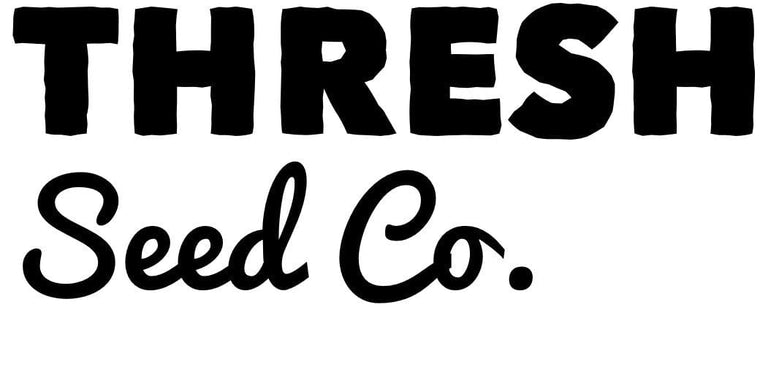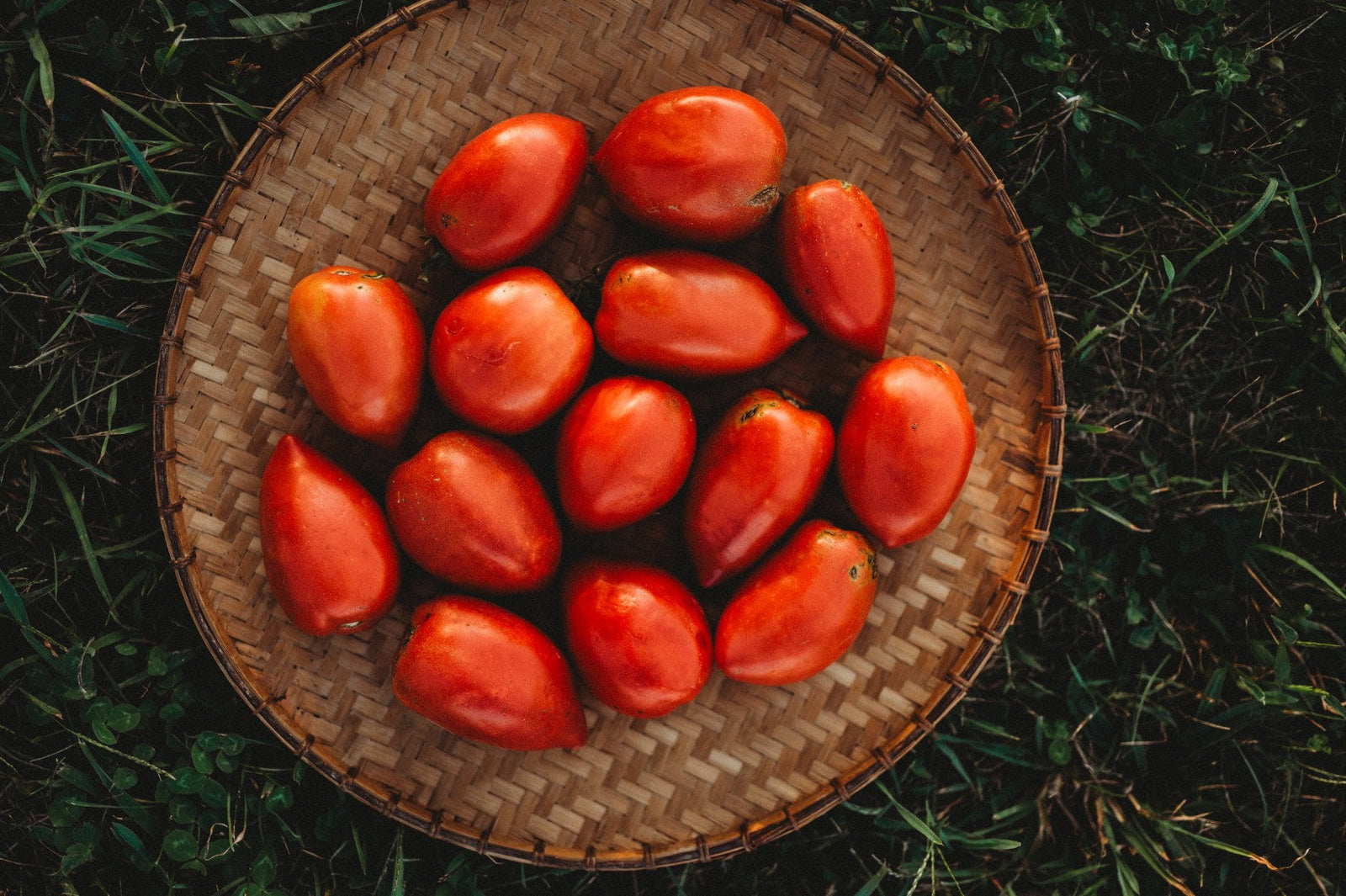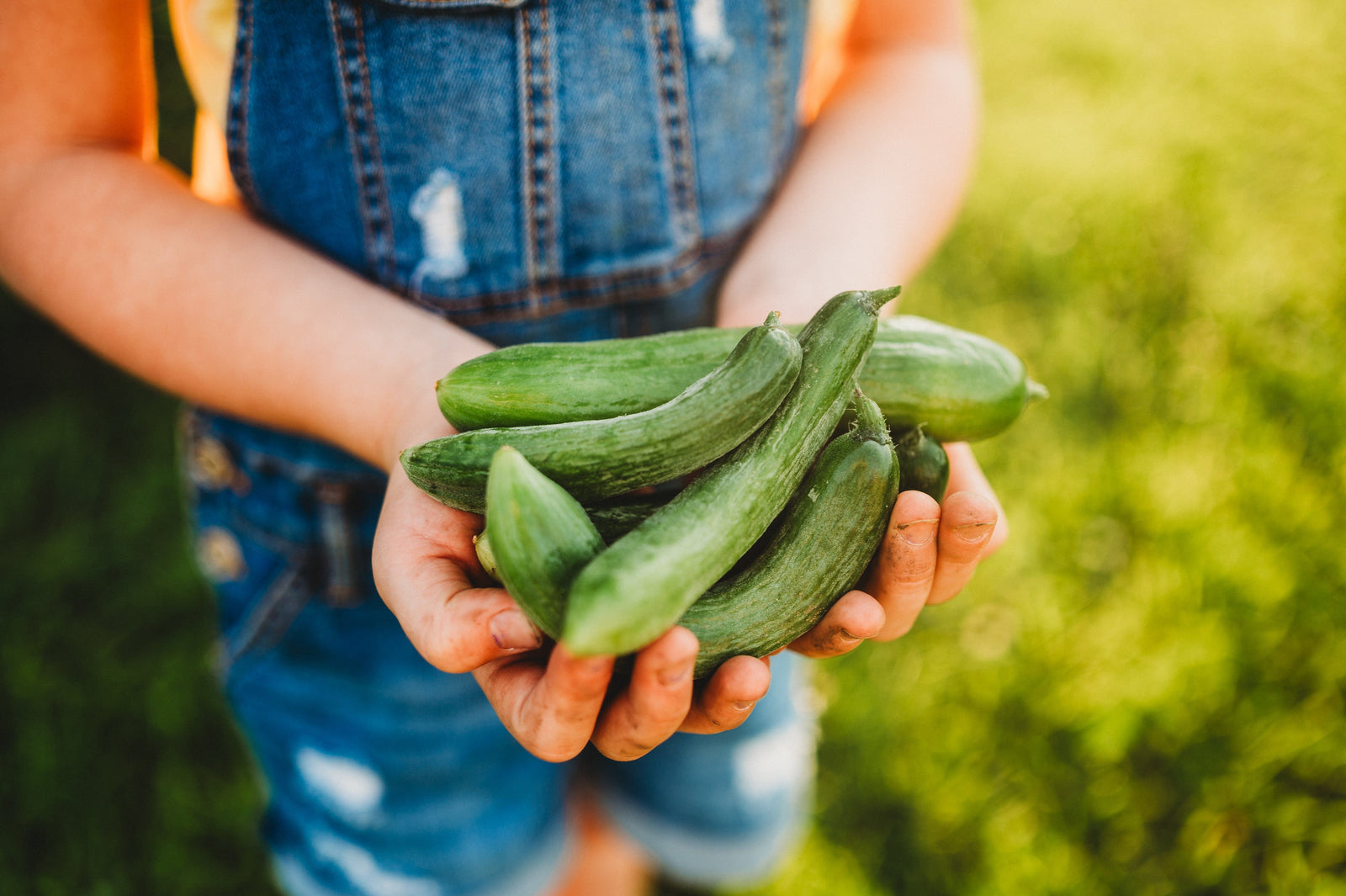It's usually that first warm day after a long, cold winter that gets me. Sure, there's still snow on the ground, but I can tell that spring is just over the horizon and I'm ready to plant. Before long, I've dug out my old containers and started washing them in preparation for sowing the first seeds of the year. Finally, the day comes. With great joy, I fill the pots and sow my seeds, but in what seems like an instant, it's finished. "That wasn't enough," I think to myself, "Surely there's something else I can plant." I flip through my seed box looking for more herbs or veggies to satisfy my need for more "hands in dirt" time. Inevitably, I find something to plant and, at least for that moment, I'm happy.
Fast forward a couple months later and the grow room is bursting with fresh new growth. I've scratched that gardening itch, but now there's a new problem. The last frost is still a couple weeks away and those extra seeds that I used to indulge my planting addiction are now large seedlings that have outgrown their pots. The growing room is now full of seedlings that will all need to be transplanted and I find myself looking at some of my seedlings and thinking, "I probably shouldn't have started you indoors to begin with."
Having made this mistake time and time again, albeit less often in recent years, I decided to write this article to help you determine which things will benefit from starting indoors (and when) and which would be better off left until later this spring, when they can be direct seeded right into their final home. After all, we have to save some fun for later.

Why Start Seeds Indoors?
Starting seeds indoors offers a number of benefits to the gardener. Below are some of the reasons you may decide to start seed indoors.
An Earlier Harvest
The most common reason for starting vegetables indoors is to get a jump on the harvest. Tomatoes and peppers, for example, are often started early because the plants require a relatively long time to mature. Who wants to wait until August to harvest tomatoes when you could be eating your own garden tomatoes in early July? For those who live in very short season climates, starting plants early isn't just smart, it's a necessity. Starting late-maturing crops indoors allows these gardeners to grow things that they otherwise wouldn't be able to.
Increased Yield
For indeterminate plants, getting an earlier harvest also means getting more yield. Peppers in our area, for example, tend to mature in August if direct-seeded. By contrast, the same variety started indoors two months earlier might start producing in July, giving the gardener a full month or more of additional harvests. And since transplants tend to produce larger plants at maturity (or frost in our case), that extra month of harvest adds up to many more pecks of peppers!
More Control Over Growing Conditions
Another reason to start seeds indoors is because it gives the gardener control over the growing conditions that are experienced by seedlings during the critical, early stage of growth. Some seeds that require special treatments or carefully controlled soil conditions will greatly benefit from being grown indoors where they can be nurtured and given exactly what they need.
A Leg Up Over the Competition
Finally, sowing seeds indoors can be beneficial for slow-growing seeds. When started early, these seeds get time to grow without having to compete with weeds. By the time they're ready to transplant, they'll have the upper hand over any weed seeds that germinate and will quickly canopy, shading out the competition below.

Drawbacks of Transplanting
While starting seeds indoors can give you a jumpstart on your harvest season, there are a number of drawbacks that are worth noting.
Transplants Take Time to Get Established
When moved outdoors, many plants experience something called "transplant shock." The seedlings, which have grown accustomed to their comfortable indoor environment, will need some time to adapt. Outside, they'll experience wind, direct sunlight, cool nighttime temperatures, and sometimes, pounding rains. The roots, which have up until this point enjoyed fine, consistently moist and fertile soil will now have to venture into uncharted territory, navigating around rocks, clumps, and large pockets of air created by tilling. All of these obstacles can and likely will be overcome, but the plants will need time to adapt. Usually this only takes a couple weeks, however you may notice during this time that the plants are slow-growing, easily stressed, and need watering more often.
Some Plants Can't Take the Heat
While heat-loving plants like tomatoes, peppers, and eggplants will thrive in the warmth of an indoor grow room, other cold-loving plants may resent the extra heat. Extreme fluctuations in daytime and nighttime temperatures can cause leafy plants like spinach and mustard to bolt, which is not ideal if your aim is to harvest the leaves. Furthermore, some plants, like lettuce and most cole crops, will become soft when grown in hot, moist conditions. At best, these soft seedlings will need a good bit of extra care to harden them off before transplanting and/or shelter them afterwards. At worst, they may break during transplant or get thrashed by the first strong wind or pounding rain.
Fragile Roots Resent Transplanting
There are some plants that, for one reason or another, don't like being transplanted. It may be that they have a taproot, it may be that they have fragile lateral roots, or it may be that they have trouble getting adapted to sudden changes in environment. Whatever the case may be, it's best not to attempt starting these plants indoors unless you have no other choice. If you must--for example if you live in a very short season climate--it is best to start these plants in peat pots, which can be transplanted without disturbing the roots. Examples of plants that resent transplanting are corn, beans, carrots, and some types of melons.
Transplanting Requires More Resources
I know, taking care of seedlings hardly seems like a chore when you're standing in front of the newly erected seed rack at the farm store, dreaming of summer while a puddle of recently melted snow forms beneath your boots. Go ahead and have that moment, but also allow some time for this winter-weary you to get in touch with the full-swing-spring you. Will you be willing to get up early in order to water the trays before going to work? Are you going to mind sacrificing a Saturday afternoon to crawl around digging little holes while your neighbors are outside grilling and enjoying cold beverages? Are you going to lose concentration at work on that first hot day, worrying about your newly transplanted seedlings drying out? (Speaking from experience here.)
While it is certainly enjoyable to start plants indoors, it does require some investment, both in terms of money and time. You'll need pots if you don't already have them, soil, grow lights and electricity to power them. You'll have to dedicate some time each day to watering, and once they're grown, you'll need to set aside an afternoon (or weekend if you have a lot of plants) to do the transplanting. And once the plants are in, they're going to need a bit of extra attention to keep them watered and protected from extreme weather, at least until they're well established.

Benefits of Direct Seeding
While direct seeding may require a bit more patience, it is a better choice for many vegetables. Below are some of the reasons why direct-seeding can be preferable to transplanting.
Improved Root Development
Direct seeded plants spend their entire life growing in the same environment. That means they seldom experience radical changes in soil-type, nutrient availability or water uptake. Furthermore, the roots of direct-sown plants are allowed to freely explore the soil from the start, giving them more time to spread out (and then down). In fact, studies of field-grown peppers have shown that direct-seeded plants put a greater proportion of their roots into the lower soil profiles, when compared to transplants, and that the roots of direct-seeded plants make up a greater proportion of their total biomass (Leskovar et al., 1990)
Greater Resilience
The aerial portions of direct-seeded plants also benefit from growing in a natural environment. Gentle movement, caused by wind, strengthens the stems and leaves (Smith et al, 2003), making them more resistant to damage during wind gusts and storms. This movement also limits hypocotyl growth (Biddington et al, 1985), preventing the seedlings from becoming leggy and fragile. Finally, plants that are started in place get gradually exposed to seasonal changes in temperature, making them less likely to get cold or heat-shocked during sudden weather changes.
Less Work
Probably the most obvious benefit to starting seeds directly in the garden is that it saves resources, both in terms of labor and money. When growing outdoors, the gardener does not need to purchase bagged soil mix or spend hours watering, transplanting, and watering again. They simply sow the seeds and let mother nature take care of the rest. If they live in an area with plentiful rainfall, it may not even be necessary to lift a watering can.

How to Decide What's Best
After years of having this battle with myself, I have developed a process for determining whether or not I should start something indoors. By asking the following questions I can usually avoid headaches later, all while limiting my natural urge to sow everything I can as soon as possible.
- Does the plant like being transplanted? It's obvious, I know, but I try to avoid exercises in futility. If the plant doesn't like being bothered, I'll sow it in place.
- Do I want it to flower? Excluding biennials, any vegetable for which flowering spells the end of harvest (like lettuce, spinach, or cilantro), I shy away from starting indoors. These plants just bolt too easily under artificial conditions.
- How long does it take to mature? If it is late-maturing and I can get a jumpstart on harvest by starting indoors, I'm all in. If it matures quickly, I'll save myself some trouble and direct seed it.

Which Vegetable Seeds Should I Start Indoors?
By all means, feel free to experiment yourself with starting different vegetables indoors. We often find situations where conventional wisdom holds little truth. However, based on their inherent growing preferences and our personal growing experience, below are our recommendations on which seeds should be started indoors and which ones perform better when directly seeded. We've also included our suggestions on when to start various vegetables.
| Vegetable | Recommended | Sow Indoors | Sow Outdoors |
| Arugula | Direct | Not recommended | Early spring and fall |
| Beans | Direct | Not recommended | Once soil temp reaches 60 degrees |
| Beets | Direct | 5 weeks before last frost | 3-4 weeks before last frost |
| Broccoli | Either | 6-8 weeks before last frost | Early spring and fall |
| Brussels Sprouts | Either | 6-8 weeks before last frost | Spring |
| Cabbage | Either | 6-8 weeks before last frost | Early spring and late summer |
| Carrots | Direct | Not recommended | Early spring to mid-summer |
| Corn | Direct | Not recommended | After last frost |
| Cowpeas | Direct | Not recommended | After last frost |
| Cress, Curled | Direct | Not recommended | Early spring and fall |
| Cucumbers | Direct | 3 weeks before last frost | After last frost |
| Eggplant | Indoors | 8-10 weeks before last frost | Not recommended |
| Kale | Either | 6-8 weeks before last frost | Early spring and fall |
| Kohlrabi | Either | 6-8 weeks before last frost | Early spring and fall |
| Lettuce | Direct | Not recommended | Early spring and fall |
| Melon | Direct | 3 weeks before last frost | After last frost |
| Mustard | Direct | Not recommended | Early spring and fall |
| Onions | Indoors | 8-12 weeks before last frost | Spring (green onions only) |
| Peas | Direct | Not recommended | Early Spring and Late Summer |
| Peppers | Indoors | 6-8 weeks before last frost | After last frost |
| Radishes | Direct | Not recommended | Early spring and fall |
| Sorghum | Direct | Not recommended | After last frost |
| Spinach | Direct | Not recommended | Early spring and fall |
| Squash | Direct | Not recommended | After last frost |
| Swiss Chard | Direct | 5 weeks before last frost | Early spring and fall |
| Tomatoes | Either | 6 weeks before last frost | After last frost |
| Turnips | Direct | Not recommended | Early spring and fall |
| Watermelon | Direct | 3 weeks before last frost | After last frost |
Why Not Do Both?
If you want to start plants indoors and get early harvests, but also don't want to invest too much time, consider dividing your efforts. For example, you could start some cabbage seeds indoors around eight weeks before the last frost. Six weeks later, when the weather has warmed, but frost is still possible, you could transplant your seedlings (after hardening them off) and at the same time, sow a few more groupings of cabbage seeds. The transplants will be set back a bit from the move, but they'll still mature a month before the direct-sown plants, giving you an early harvest. Best yet, you won't be faced with the challenge of using up all of your cabbages in one week.
In Summary: Transplanting vs Direct Seeding
Sowing seeds indoors can be a great way to get a jump on your first harvest, especially in climates where early freezes shorten the growing season. However, there are some circumstances where direct-seeding may be more advantageous. By considering the characteristics of a given plant and its maturity relative to your growing season, you can determine whether or not it will be worthwhile to start it indoors. Finally, by planting a portion of your seeds indoors and reserving the rest for direct-seeding, you can minimize labor while extending your harvest season.






